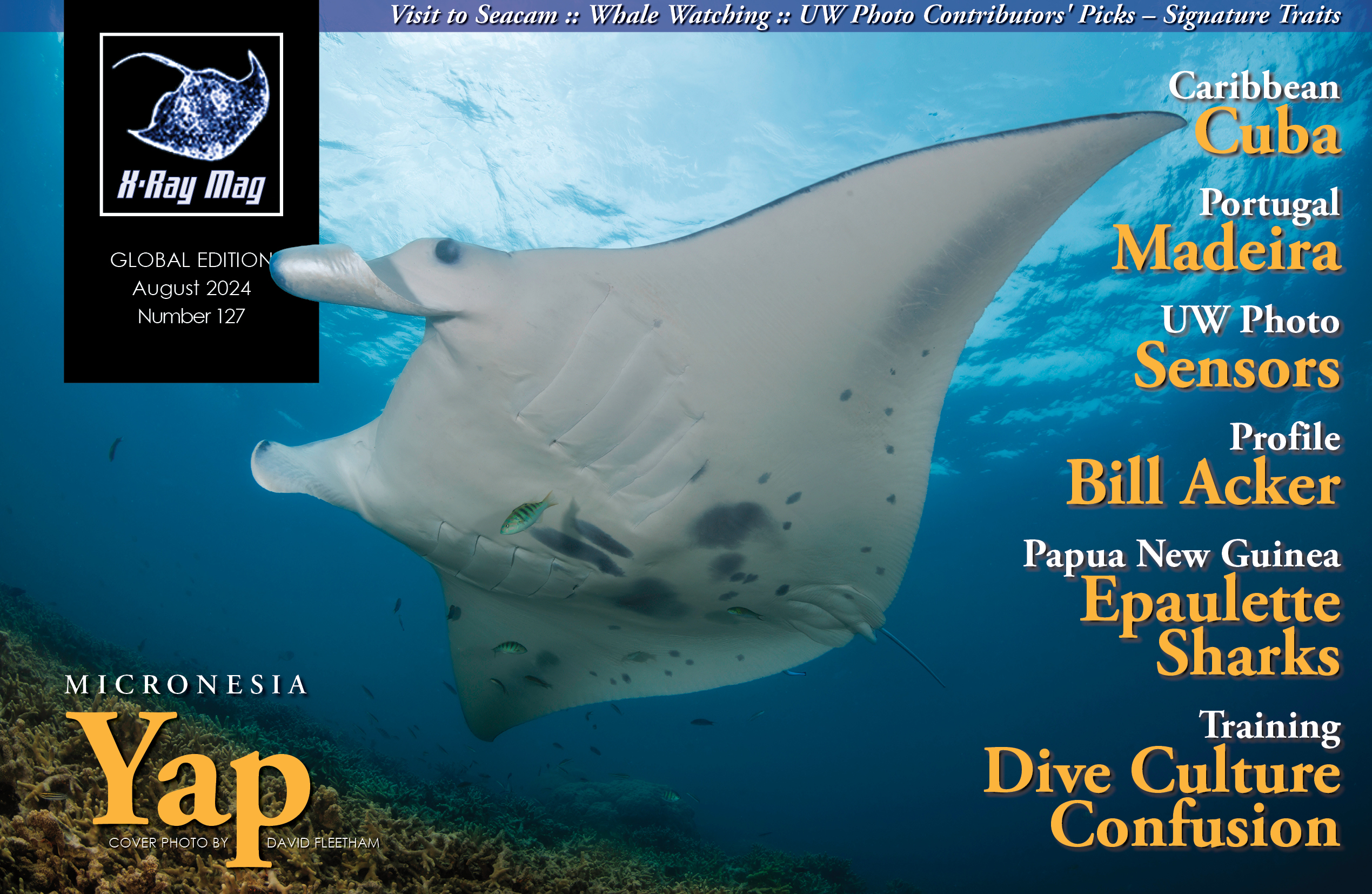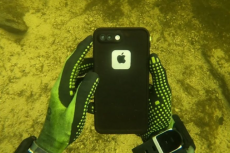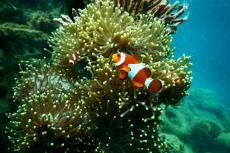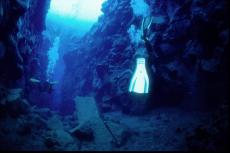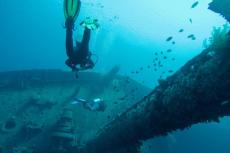How does sensor size impact image quality? Underwater photographer John Ares offers insights into the realm of camera sensors.
Contributed by
Since the development of the digital photography revolution in the early 2000s, there have been many attempts to describe or define image quality in simple terms, including factors such as megapixels, resolution, sensor size and photosite size. These factors are related but not interchangeable.
Megapixels were an early attempt to describe quality by multiplying the pixel dimensions of a photo. For example, 2,000 pixels wide multiplied by 1,500 pixels high equals 3,000,000 pixels, or three megapixels (3MP). One megapixel equals one million pixels.
Resolution is related to pixels, and for most discussions, the two are the same. In order to keep the original resolution (quality), it is best to shoot in RAW format rather than JPG or another format.
Sensor size is perhaps the most important factor in producing a quality image. Quality for viewing an image on a monitor or screen, as opposed to making an enlargement, is a critical difference. If you are making 3 x 4ft enlargements, then a large sensor is important. For years, I have used a 6MP APS-C-sized sensor camera for presentations on a screen and have never had a sharpness complaint.
Sensor sizes include small cell phone sensors, 4/3 sensors, APS-C sensors and full-frame sensors. Canon had an intermediate-size sensor called APS-H for a short time. In general, larger sensors are more expensive to manufacture and fit into the larger camera bodies required. Most cell phone sensors are about one centimeter wide, which does not allow for big enlargements such as 20 x 30 inches.
In the early 2000s, Olympus, Kodak and Panasonic developed the 4/3 sensor. Four-thirds refers to both the size (4/3 inch) and the aspect ratio (4:3) of the sensor. The aspect ratio of an image is the ratio of its width to its height. It is expressed as two numbers separated by a colon, width:height. For example, 3:2 in still photography.
The 4/3 sensor is roughly half the size of a full-frame sensor, allowing for greater apparent magnification of telephoto lenses, but cropped (or less wide) wide-angles. In 2008, the 4/3 format was replaced by the Micro 4/3 format. Micro 4/3 was designed for mirrorless cameras and allows the back of the lens to be closer to the sensor.

APS-C
APS-C sensors are a very popular format in D-SLRs and mirrorless SLRs because they offer a good compromise between cost, dimensions and camera size. The APS-C sensor’s physical dimensions are 25.1 x 16.7mm, with an aspect ratio of 3:2. Canon, Nikon, Pentax and Sony have versions of APS-C that may vary slightly in the dimensions. Like the 4/3 sensor, the APS-C sensor has a crop factor as well. It is smaller than a full-frame sensor, allowing for greater “apparent” magnification of telephoto lenses, but cropped wide angles.
Full-frame sensors

Full-frame sensors are the same size as a standard 35mm film negative or slide (36mm x 24mm). Many lenses from the film era, and those made for full-frame sensors, retain their original angle of view and do not suffer from the “crop factor” of APS-C and 4/3 sensors. The primary advantage is the tremendous resolution, in addition to the ability to severely crop an image due to the large size of the file produced.
What else do you shoot? I shoot birds and wildlife as well as fish. You can never get close enough to birds. A full-frame sensor allows you to crop in order to get a closer image—perhaps effectively using a 1,800mm lens crop from a frame shot with a 600mm lens. A disadvantage of the large sensor is that the files produced are larger and take up more space on a card and on your hard drive.
Photosites
Photosites are the final factor that affects image quality. This subject has the potential to really get into the weeds, technically speaking. Photosites on a sensor (hardware) are essentially small lenses that gather light. They are roughly equivalent to pixels, which refer to the smallest component editable in software. The larger the photosite, the more light it gathers. It is almost paradoxical to realize that within a fixed set of dimensions (for example, 36mm x 24mm for a full-frame sensor), larger photosites result in higher-quality images.
Photosites are described in microscopic terms of pixel pitch (microns), pixel area (microns) and pixel density (MP/cm²). Pixel pitch is the distance from the center of one photosite to the center of the next. Pixel area is described in terms of squared microns. In general, the larger (and newer) the sensor, pixel pitch and pixel area, and the lower the pixel density, the better the camera. Look up photosites for any given camera to see the dimensions, which are usually expressed in microns.

Contest
The dedicated underwater film cameras made by Nikon years ago were called Nikonos. Of course, they went the way of the dodo when the world went digital in the early 2000s. However, there were some fantastic, sharp lenses that were made for the camera back then, notably a 20mm f/2.8 and a 15mm f/2.8. There are still many Nikonos lenses out there, which are available on eBay and other sources at a fraction of their original cost. The lenses have manual diaphragms and manual focus.

Consider this a challenge posed to the manufacturer: Develop a full-frame sensor camera (with at least an 8MB sensor) that can accept Nikonos lenses for their original wide-angle coverage. In essence, build a digital Nikonos. The camera should display an image regardless of the aperture setting. A fiber-optic strobe connection should be offered. Provision for a conventional strobe is optional. Video is another option, but not necessary. ■



